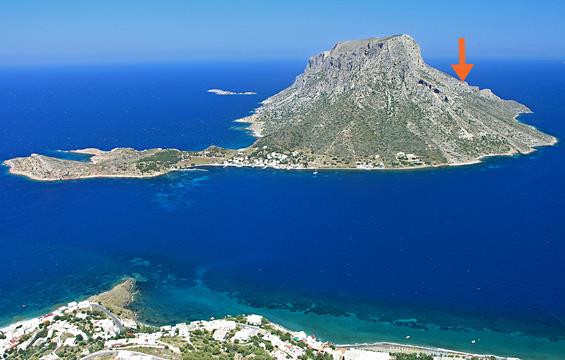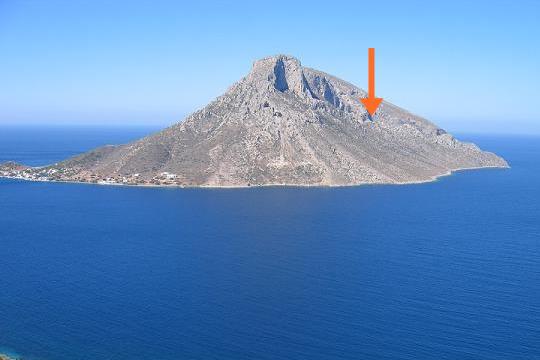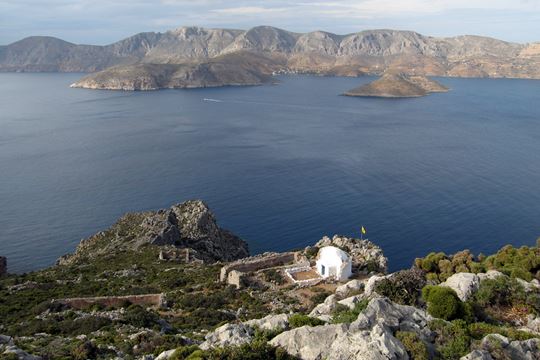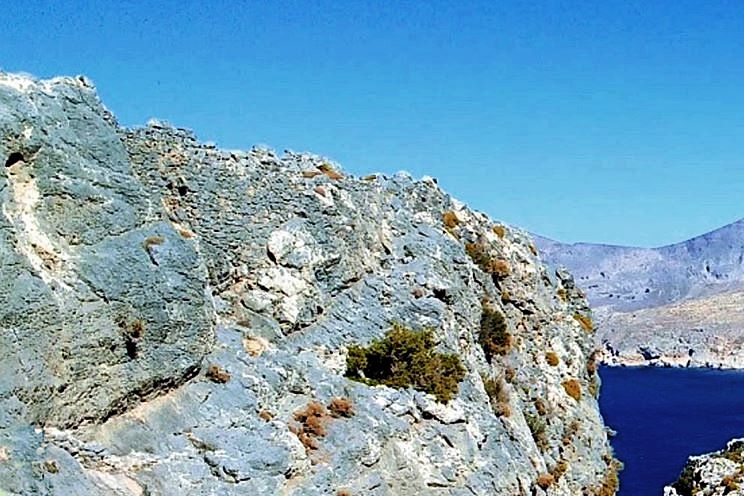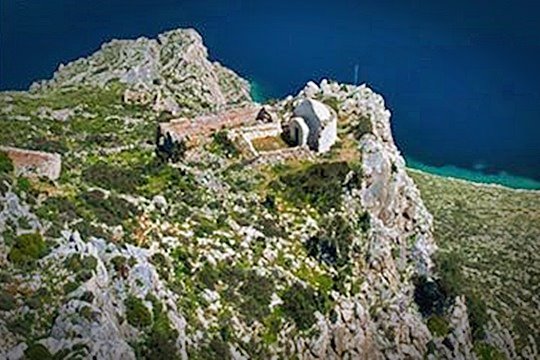Telendos, Kalymnos, Dodecanese,South Aegean
Castle of Telendos
| Location: |
| On a rocky slope at the north side of the island Telendos, in Dodecanese |
| Region > Prefecture: | 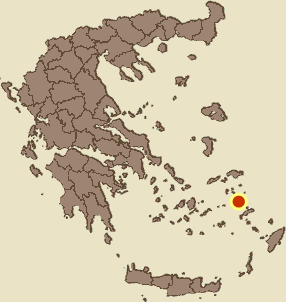 |
| South Aegean Dodecanese | |
| Municipality > Town: | |
| City of Kalymnos • Telendos | |
| Altitude: | |
| Elevation ≈ 140 m |
| Time of Construction | Origin | |
| Before 6th century AD | BYZANTINE |
|
| Castle Type | Condition | |
| Medieval Settlement |
In Ruins
|
The remains of a byzantine castle and settlement at the north side of the little island of Telendos opposite to Kalymnos, in Dodecanese.
The relatively modern chapel of St. Constantine has been built among the ruins of the castle.
Castle Description
Text: Dr. Michael Losse, Singen (Hohentwiel), Germany (10.08.2021)General Description
Télendos (part of the municipality of Kálymnos) is said to have been the western part of the island of Kálymnos, but after a major earthquake in 554 A.D. was split and separated from Kálymnos by a strip of water about 0,8 km wide. With a length of 3,8 km and a width of 1,6 km it covers an area of 4,7 km².
Télendos mainly consists of the steep chalk ridge named Ráhi (459 m) and a peninsula to its south-east, 0,9 km in length whith a width of 0,4 km. The only village on the island, also named Télendos, is situated on the east side, facing Kalymnos.
—Fortified Town: The settlement is situated in a trough facing Kálymnos. It is not protected by an enceinte, but by a crenellated defensive wall on the north and the west sides of the town, which follows the configuration of the mountain along the slope. Ruins of several cisterns, houses and the ruined big church of Ágios Konstantínos (Church of Saints Constantine and Helen) still exist. Later a chapel was built inside the ruins of the church, re-using its apse.
It seems the entrance to the town was protected by a round (late medieval?) tower or bulwark, probably built by the Knights Hospitallers.
Photo No. 1 Télendos: Fortified Byzantine settlement, cistern and chapel replacing the former Ágios Konstantínos church. In the background Kálymnos island with the Kalymnian castles Kastélli (behind the apse oft he church) and Galatianí (also called Vryókastro, on top oft he highest mountain in the background) (photo © Dr. Michael Losse, 2006)¨.
Photo No. 2: Télendos: “City wall” of the fortified Byzantine settlement (photo © Dr. Michael Losse, 2006).
—Castle: Ruins of a small castle with an elongated ground plan, likely built by the Byzantines and developed by the Knights Hospitallers (who most-probably built a battery), are found on a promontary, flanking the north of the town’s defensive wall, overlooking a gorge to its east.
Photo No. 8 & 9: The castle as seen from the fortified Byzantine settlement (photo © Dr. Michael Losse, 2006).
History of the castle
Télendos was part of the ancient Kalymnian demos Messos, and in the 3rd century B.C. of the demos Panormos. In the Early Christian Period (4th-7th century) a lot of buildings were erected, amongst those five remarkable churches, tombs, bathhouses and houses.
As a consequence of the horrible earthquake in 554 A.D. the intermediate region between Télendos and Kálymnos sank under sea level.
Arab sea raids starting in the 7th century forced the inhabitants of coastal settlements to move to the mountains, where they built new settlements and fortifications during the so called “Dark Centuries” (7th till 10th centuries). At Telendos the fortified settlement Ágios Konstantínos was founded during that period (Koutellas 2006, p. 76).
Till today there is no evidence of another medieval fortification than the fortified settlement and castle of Ágios Konstantínos (described by Spiteri 1994, p. 223; Spiteri 2001, p. 197; Koutellas 2005, pp. 65-69; Georgios Deligiannakis: The History and Archaeology of the Aegean Islands in Late Antiquity, A. D. 300-700. Oxford 2006 [unpublished thesis], pp. 325-332).
It is during the 7th century that the former town at the coast, which existed from ancient times till the 7th century A.D. was abandoned. The new fortified settlement Ágios Konstantínos was built in a distance of 3 km to the north-west on the north-eastern slope of the mountain Ráhi, probably at the position of an ancient settlement.
In the 11th century people moved back to the old town at the coast. Later the island was completely abandoned (ibdid.). The Florentine monk and traveller Cristoforo Buondelmonti mentioned Télendos uninhabited in 1420, as the Italian geographer Francesco Piacenza did in 1688. But the island was inhabited again during the Ottoman occupation.
Other Info
SourcesKoutellas, Michael J.: Kalymnos. History, Archaeology, Culture. From the Prehistoric Age to present times. Kalymnos 2006.
Losse, Michael: Die Burgen und Befestigungen auf den Dodekanes-Inseln Kálymnos, Télendos und Psérimos. Eine Bestandsaufnahme und Studie zum spätmittelalterlichen Wehrbau in der Ägäis. In: Burgenforschung – Europäisches Correspondenzblatt für interdisziplinäre Castellologie, vol. 2, 2013, Marburg (Lahn) 2014, pp. 179-216.
Losse, Michael: Die Burgen und Festungen des Johanniter-Ritterordens auf Rhódos und in der Ägäis (Griechenland) 1307-1522. (Publisher: Nünnerich-Asmus Verlag) Mainz 2017.
v Fortresses of the Cross. Hospitaller Military Architecture (1136-1798). Valleta (Malta) 1994.
Spiteri, Stephen C.: Fortresses of the Knights. Ħamrun (Malta) 2001.
| First entry in Kastrologos: | November 2013 | Last update of info and text: | August 2021 | Last addition of photo/video: | August 2021 |
Sources
- Article amd photos 1,2, 8,9 (May 20006) by Dr. Michael Losse
|
|
| Access |
|---|
| Entrance: |
| Free access |



